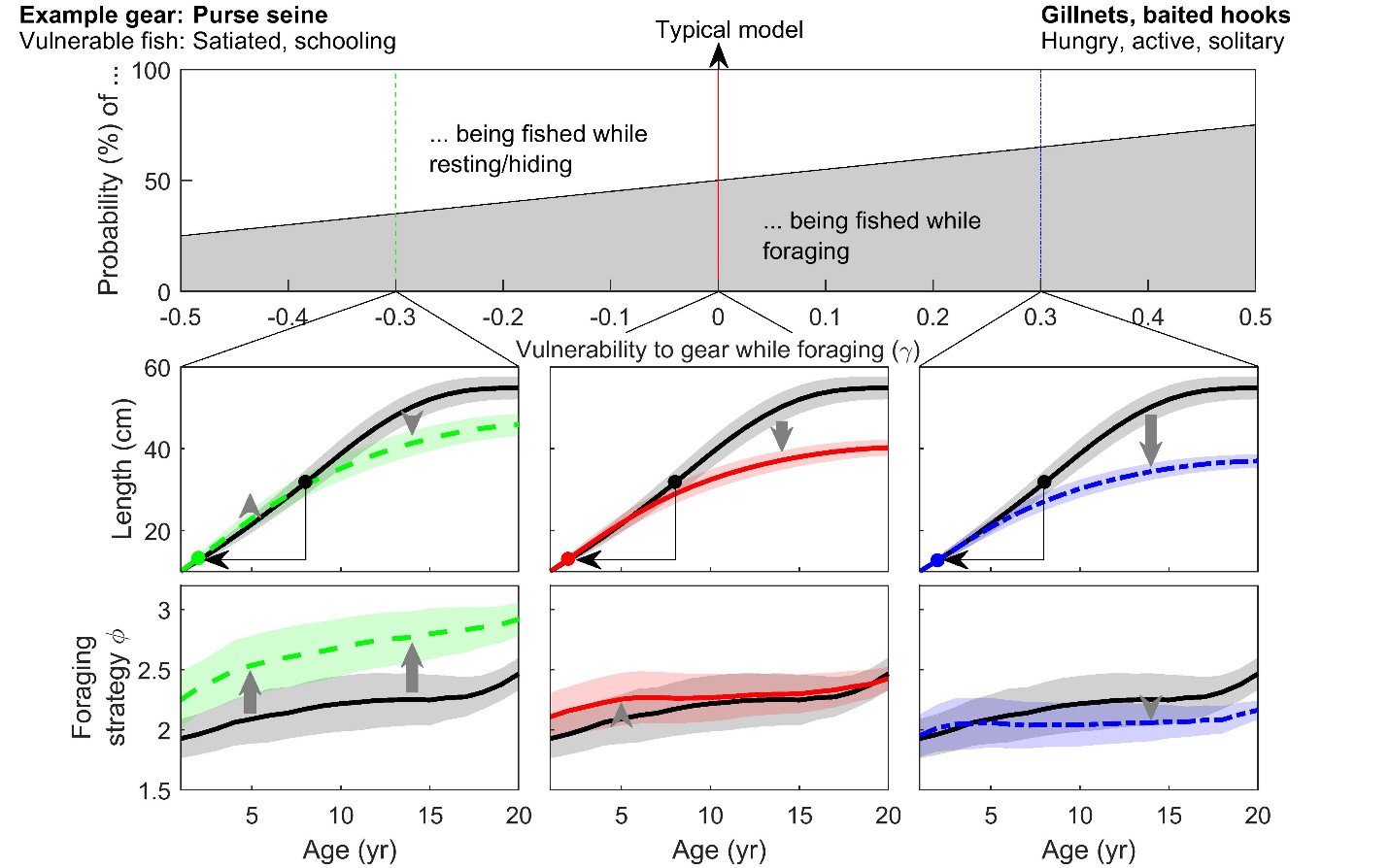Evolutionary effects of fishing gear on foraging behaviour and life-history traits
Fishing gears are designed to exploit the natural behaviours of fish, and there is concern that fishing may lead to their evolution. However, predicting the effects of behavioural-selection is not always intuitive. In a recent paper accepted in Ecology & Evolution (Claireaux et al., In press) we try to clarify how behaviour-selective fishing affects the optimal behaviour, life-history traits and natural mortality of exploited populations.
Because behaviour is connected to life-history traits that determine the resilience and productivity of a fish stock, it is important to fisheries management to understand how fishing can induce changes on the behaviour and how this will impact a stock’s productivity. Behaviour is traditionally defined as a continuum, going from “bold” (e.g. actively foraging and exploring, more aggressive individuals) to “shy” (e.g. less active, more cautious in novel environments). For the moment, most of the interest focused on the effect of gears removing bolder individuals. The first intuitive expectation is that this type of fishing causes evolution towards reduced boldness since only the shy, less active individuals are left in the population. However, by reducing the chance of survival, fishing tends to favor evolution towards faster growth, smaller adult size and early maturation. Faster growth usually requires more energy and is therefore commonly associated with an increased foraging and boldness. On the opposite, smaller fish suffer more mortality from predation and therefore might shift to reduced risk-taking and boldness, to lower their exposure to predators. The opposite pattern could be expected when gears remove shyer, less active individuals, however few studies focused on this type of selection.
To find which of these expectations ends up being dominant, we modelled a population of fish and applied different selective fishing pressures. The fishing selectivity was defined as a continuum ranging from being selective for only foraging individuals to only hiding/resting individuals, and including unselective fishing (Figure 1). Our main finding is that, compared with unselective fishing, gears targeting shyer individuals led towards higher activity and natural mortality rate in the population, while targeting bolder individuals led to lower activity and natural mortality rate. The more regularly observed traits such as length-at-age, age at maturity, and reproductive investment showed only little sensitivity to the behavioral selectivity.

Figure 1. Effect of vulnerability to gear on length-at-age, foraging strategy and age at maturation. In the second row, dots indicate age at first maturation: black ones for unfished populations, and colored ones for fished populations (the thin arrow highlights the shift). The solid red line corresponds to the case where fishing is independent of behaviour. The dashed green and dash-dot blue lines correspond to the case where fishing targets shy, passive and bold, active individuals, respectively. Shaded areas correspond to the standard deviation of the trait within the population, and grey arrows show the direction of change.
Traits crucial for understanding stock dynamics such as behaviour and natural mortality are difficult to estimate and often assumed to be constant, even though we know they vary in several stocks. In addition, we know that natural mortality will increase due to fishing-induced adaptations. However, how much it increases will depend on which behaviour is preferentially targeted. For the population, a strong increase in natural mortality can mean less resilience to heavy harvesting or unfavorable environmental conditions. At the ecosystem level, it can modify the food web balance and affect connected species, such as predators and preys. For fisheries management, ignoring such variations would lead to under-/overestimation of stock size by models. Therefore, a difference between the stock perceived by fishermen in the field and the stock estimated by the assessment model might arise. Such difference, where fishermen observe considerably larger or lower amounts of fish than stock assessments estimate, can erode trust, complicate dialogue, and be detrimental for successful management.
References
Claireaux M., Jørgensen C. & Enberg K. (In press). Evolutionary effects of fishing gear on foraging behaviour and life-history traits, Ecology & Evolution.
